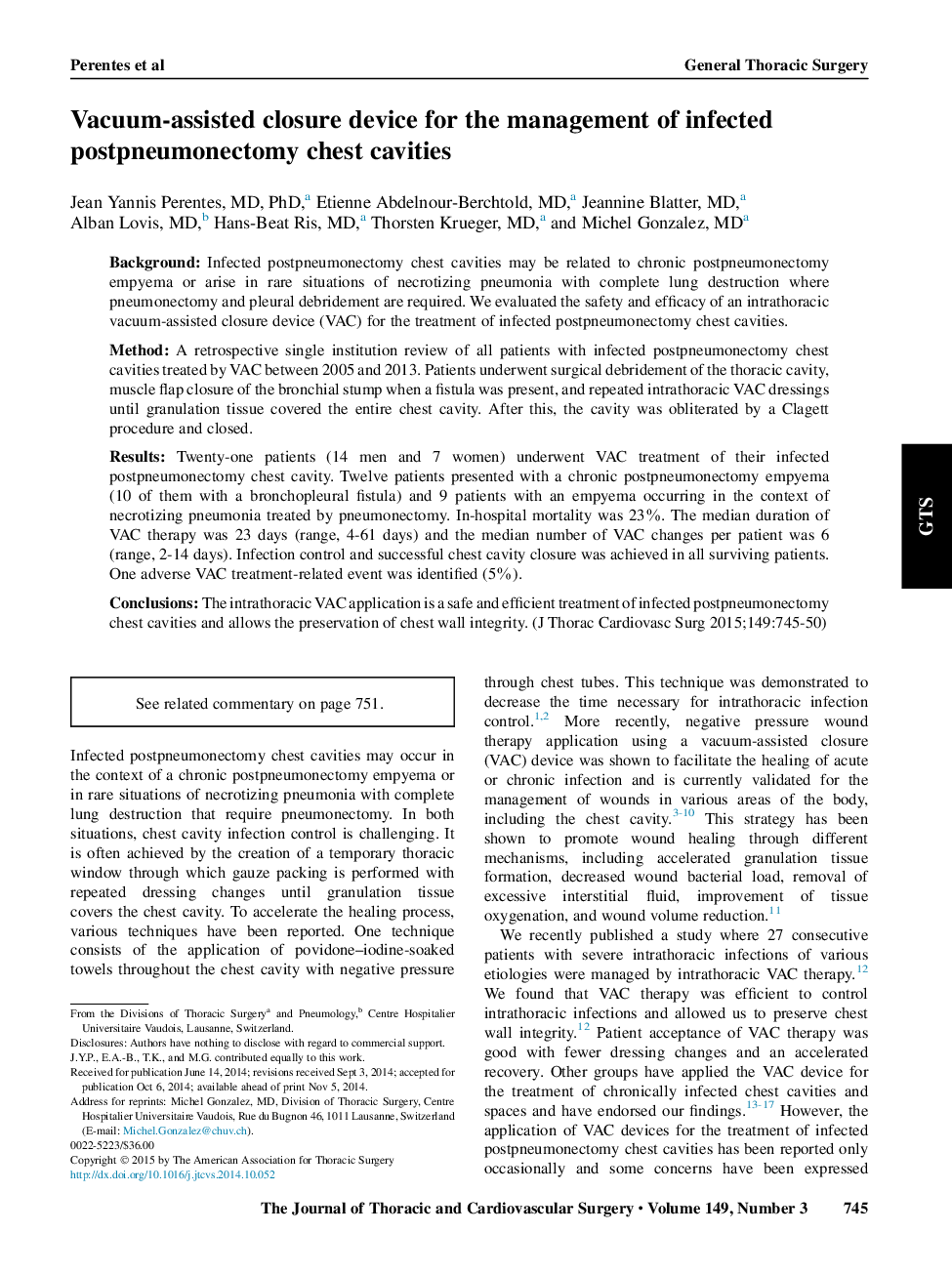| Article ID | Journal | Published Year | Pages | File Type |
|---|---|---|---|---|
| 5988873 | The Journal of Thoracic and Cardiovascular Surgery | 2015 | 6 Pages |
BackgroundInfected postpneumonectomy chest cavities may be related to chronic postpneumonectomy empyema or arise in rare situations of necrotizing pneumonia with complete lung destruction where pneumonectomy and pleural debridement are required. We evaluated the safety and efficacy of an intrathoracic vacuum-assisted closure device (VAC) for the treatment of infected postpneumonectomy chest cavities.MethodA retrospective single institution review of all patients with infected postpneumonectomy chest cavities treated by VAC between 2005 and 2013. Patients underwent surgical debridement of the thoracic cavity, muscle flap closure of the bronchial stump when a fistula was present, and repeated intrathoracic VAC dressings until granulation tissue covered the entire chest cavity. After this, the cavity was obliterated by a Clagett procedure and closed.ResultsTwenty-one patients (14 men and 7 women) underwent VAC treatment of their infected postpneumonectomy chest cavity. Twelve patients presented with a chronic postpneumonectomy empyema (10 of them with a bronchopleural fistula) and 9 patients with an empyema occurring in the context of necrotizing pneumonia treated by pneumonectomy. In-hospital mortality was 23%. The median duration of VAC therapy was 23 days (range, 4-61 days) and the median number of VAC changes per patient was 6 (range, 2-14 days). Infection control and successful chest cavity closure was achieved in all surviving patients. One adverse VAC treatment-related event was identified (5%).ConclusionsThe intrathoracic VAC application is a safe and efficient treatment of infected postpneumonectomy chest cavities and allows the preservation of chest wall integrity.
